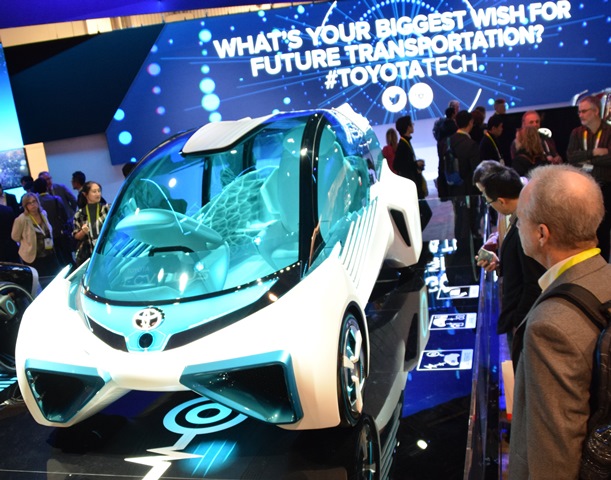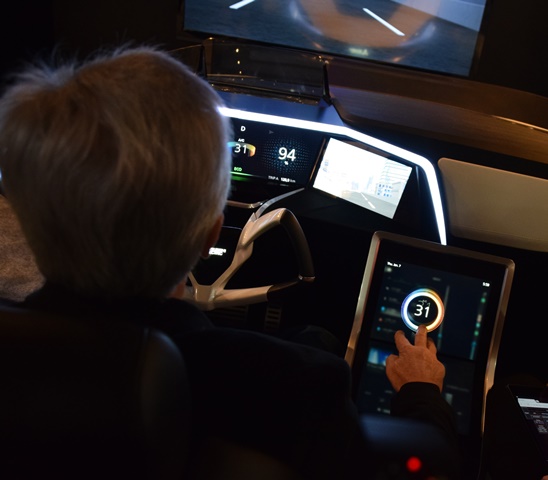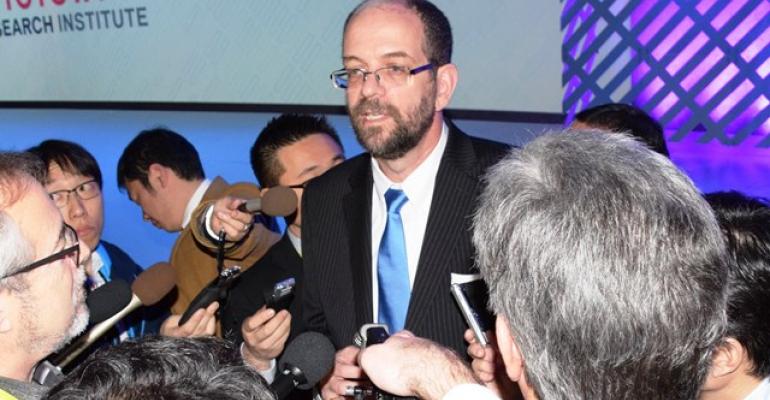LAS VEGAS – Entrusting the lives of occupants to the intelligence and capabilities of self-driving cars requires a giant leap of faith, and Toyota’s Gill Pratt knows the industry cannot do enough testing or fine-tuning of software to ensure their safety.
“People have reasonable fears about whether technology will work in their best interest, or if it is competent to do the jobs we assign,” Pratt, CEO of the Toyota Research Institute, says at a press conference during this week’s CES 2016 here.
To date, automakers and suppliers have demonstrated extensive capabilities with autonomous vehicles changing lanes on the highway, parallel-parking themselves and even driving across the stage without a human on board during the Audi keynote speech at CES 2015.
Pratt considers these early illustrations to be “relatively easy because most driving is easy.” However, allowing autonomy to help deliver safe transportation in all situations will be much more difficult, he says. “It’s this hard part that we intend to address.”
Until now, the auto industry has measured on-road reliability of autonomous vehicles in the millions of miles, but Pratt is convinced it’s not enough.

“To achieve full autonomy, we actually need reliability that is a million times better,” he says. “We need trillion-mile reliability.”
He arrives at the number based on the 10 million vehicles Toyota sells each year globally, with each lasting about 10 years and being driven 10,000 miles (16,093 km) per year.
“That means the roughly 100 million Toyota cars and trucks in service at any given time travel a total of about 1 trillion miles per year,” he says. “Even if a very small percentage of that driving is difficult, that percentage times a trillion equals many miles of difficult driving that we must address.”
Pratt says people can tolerate human error but are less forgiving of machines. “We expect them to be ever-ready and nearly perfect,” he says.
Here at the massive convocation dedicated to consumer electronics, Toyota says it has hired “an all-star group of scientists and engineers” to TRI’s technical leadership team to focus on research into artificial intelligence and robots.
Announced two months ago, TRI is intended to bridge the gap between fundamental research and product development. Backed by Toyota’s 5-year, $1 billion investment, its ultimate goal is to create a car incapable of causing a crash and able to provide mobility to the handicapped, elderly and others who cannot otherwise drive.
Experts Onboard; Cars as Storytellers
The organization also wants to accelerate scientific discovery by applying techniques from artificial intelligence and machine learning.
“We are moving quickly as an entirely new company,” Pratt says. “We are opening for business this month in two locations – one in Stanford Research Park in Palo Alto, CA, the other in Kendall Square, in Cambridge, MA.”
With expertise in computer science and robotics, the initial technical team includes:
- Eric Krotkov, former program manager of the Defense Advanced Research Projects Agency (DARPA).
- Larry Jackel, former Bell Labs department head and DARPA program manager.
- James Kuffner, Carnegie Mellon University professor and former head of Google Robotics.
- John Leonard, professor-mechanical and ocean engineering at Massachusetts Institute of Technology.
- Hiroshi Okajima, project general manager-R&D at Toyota.
TRI has launched nearly 30 initial research projects, including one at Stanford called “Uncertainty on Uncertainty,” which attempts to teach cars to respond safely to events that are not anticipated.
“Let’s say we hadn’t thought of the need for a car to avoid debris falling off a truck. Should it think of the debris like another car?” Pratt asks.

The debris might break apart into many pieces or might be moving at high speed, which will affect how the vehicle identifies it.
“To address this challenge, the Stanford team will be augmenting machine learning with new methods that generalize competence to handle the unanticipated,” he says.
Likewise, a team at MIT will lead a project called “The Car Can Explain,” which teaches machines to tell stories.
When a car does something unexpected, Pratt says it will need to “provide unambiguous explanations” of what happened – and why.
“We need to be sure that the autonomous agents given the power to make decisions are capable of being audited,” he says. “We can’t trust what we don’t understand, so we must build cars that can explain their actions.”





